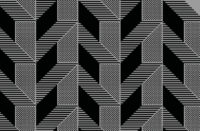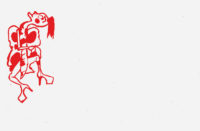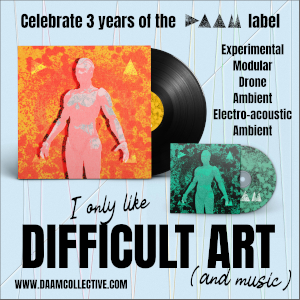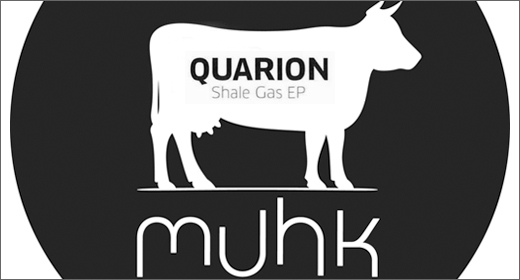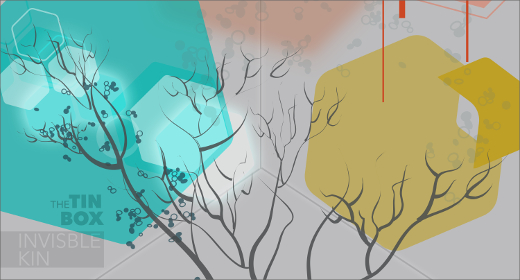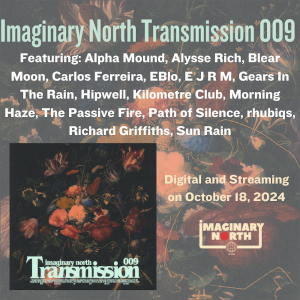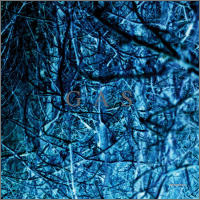
(12.20.08) In the 1980s, a young Wolfgang Voigt indulged in a lab project he named ‘Blei’ (= ‘lead’), drawing on elements of genres from German classical (Wagner, Berg, and Schönberg) to polka, from brass band to Volksmusik to schlocky schlager-pop. Voigt’s Big Idea – at that stage probably little more than a youthful pipedream than the Grand Design of a Budding Visionary – was to author a distinct popular music style that would somehow chime with the then cultural Zeitgeist whilst representing the audio-cultural DNA of his corner of Europe. He did not quite have his foot on the Gas at that point, but he was almost there…
It took rave to come and go and leave its legacy, esp. the boutique end of the techno template (Electronic Listening Music) and with it the establishing of the loop aesthetic, before Gas was ready for full emission. Retrospect now grants a clearer view, and reveals Voigt’s Gas project as arguably the most ambitious among the various vectors running through ELM, cf. UK: Warp, US: various Detroit tech-niks, and DE: Basic Channel. In fact, BC had dabbled earlier, but theirs was an urban-industrial variant, and still resonated with the club, albeit one in a remote basement obscured by echo clouds and delay detritus. Voigt was the first to boldly go where no no techno-man had gone before – taking his Gas deep into the King’s Forest and up the Magic Mountain.
All four Gas releases (1996-2000) are assembled in this set, and all are articulated through a similar process that seems to be the final distillation of the ‘Blei’ concept. Loops of staticky brass, woodwinds and strings, presumably sampled from old vinyl then further effaced with layers of processing (techniques characterised as ‘microscope’/’zoom’/’detail’), are smudged into a grainy, even ungainly, wash, as if leeched into by oil and grit. Shrouded under the fog often stalks a stern insistent kick drum, the fulcrum which allows the clouds a sense of centre round which to darkly circle. Sometimes the centre does not hold, though, and the sound of things falling apart proves an engrossing side project for the asssiduous listener. Not for nothing did ‘Gas’ become the signifier for the project, Voigt finding in it representation of the vaporous boundary-less sonorities of much of what is collected on Nah and Fern. Voigt’s ambit of operation was not, like some who followed, that of a post-structuralist freeplay of shifting musical/literary/environmental signifiers. An alchemical reduction of raw material to aesthetic essence, where, removed from original context, it was freed to mean something other: “to create a kind of aesthetic essence, a cave, from focussing on one single detail where you can get lost in…” (Voigt again). And, partly determined by the overt framing of the project through album titles like Königsforst and Zauberberg, backed up by the imagism of the original covers, the Gas sound seems to evoke a kind of Nordic-cum-Teutonic naturalism – from the crepuscular rustlings of leaf-carpeted forest depths to a Sturm und Drang of Alpine way-up-highs. Bespoke net-retailer of popular electronics, boomkat, trumpets: “The Darkest Drones from Twin Peaks crossed with Basic Channel and Arvo Pärt” in signature style shorthand, and, for a change, they’re just about on the mark. The reference, however, requires expansion. Here it comes…
Gas, Voigt’s self-titled opening statement in 1996, took techno’s template and tipped over it a slurry of strata of unpitched material and woozy ambience. These swigs from the ‘first pressing’ of his Blei blend don’t slide down too easy, but are possessed of a strange intoxicating quality. The opening statement of Gas is a thick symphonic chord that trails the main event, but the album as a whole is the nearest to B-movie of the bunch. Track 2 chug-a-lugs like a drunken Wassermann, while track 4 is similarly lurching, like Stockhausen taken for a bumpy ride. Some of this Gas now sounds rather too close to the w(h)acky loopy-loop techno of Voigt’s Grungerman ID, 4/4 template subverted by conflicting time-sigs vying with each other – a neo-wonky pitter-patter skip’n’clatter.
1997’s Zauberberg is a much darker more eerie animal, but a more coherently realised work overall. Taking elements of the debut but infusing it with more of a remote post-classical bent, Zauberberg crawls with miles-deep layers and thrums with those signature 4/4 kicks, muffled yet still resonant. The method has lost some of its madness and become focused, if focus is not too resolved a word for a music so veiled, as if seen through a glass darkly. Track 1 enfolds the crunch of leaves underfoot with a rich drone, suspended on a metaphysical thin red line between nothingness and the beyond. Track 3 hosts a stretched string-mass that dives into an orchestral soup, skidding on the spillage from an errant waltz-beat. By the time you get to Track 6 and its tumescent waves surging with spectral string-strata and choral simulacra the air is so over-dressed as to be stifling.
Voigt rises to the challenge of That Difficult Third Album by refining the mixture of the previous two into a batter balanced blend. Königsforst proves to be less harrowing than Zauberberg without losing the trademark Gas density, and tones down some of the uncouthness of Gas. The golden-hued cover is suggestive of sunnier climes, though the ambience is still replete with ambiguity. Track 2 makes as if to let chiming fragments of melody float upwards, only for them to get caught up in the inky undertow. Track 4 is even more enmired in a treacle of Köner-esque slo-mo lo-flo. Track 5, however, arrives like the Ride of the Valkyries, stentorian brass sounding triumphantly over a static sea, its strange braying loop spooling out into one of the most effective and dynamic of Gas attacks. These two albums provide endlessly immersive tracts of at times uneasy listening, atmospheres at once stuffy and chilly, a great teeming over-and-undergrowth gusted through by ominous winds or enshrouded in a monochrome fog, often marching to that almost martial drum-thrum.
Though 2000’s Pop, Voigt’s finale as Gas, is at first sight the one most imbued with quietude, under the surface it glows with restless micro-motion. It’s certainly the one least prone to the 4/4 imperative, early tracks secreting a liquid dawn chorus of warbly synth motifs splashed with a dew of reverse cymbals, a beauteous breaking forth redolent of spring mornings, this time with mist in the air, light breezes wafting through the blooms and plumes of viscous light-noise, more inviting in disposition, in contrast to Zauberberg’s forbidding fug. The spent static air has been cleared out and a river of glinting colour flows through it. At times so rich as to be cloying, ultimately Pop proves probably the most ‘friendly’ of Gas releases.
All in all, Nah und Fern can be seen as important and ground-breaking in asserting a different vision of (ambient) techno – as collectable rather than disposable entity. The first genuine techno-related multi-disc assemblage that isn’t one of those cheap’n’cheerful various artist compilations (cf. Trance Europe Express, and their faintly cheesy like), the reissue of these albums in a box set seems to claim for Gas a certain timeless classic status (‘Classic Bach’à ‘Classic Rock’à ‘Classic Ambient Techno’!) in an age in which exponential output and the fetishisation of ever-more hybridised sub-genres – particularly in electronic ‘dance’ music – have brought about a “growing ephemerality” (Voigt again). It’s a claim that’s backed up by how well this version of The Complete Works of Gas stands up late in 2008.
Nah und Fern is out now on Kompakt. [Purchase]







